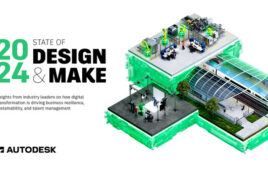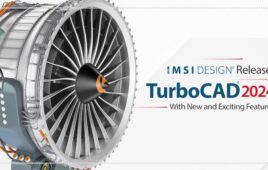Hirata Corporation is an OEM machine builder based in Kumamoto, Japan. It is active in automotive and semi-conductor industries and end-to-end machine supply from design and engineering through commissioning.

Emulate3D can integrate virtual reality (VR) features so that detailed safety checks or danger predictions can be completed in virtual environments in addition to checking on machines running PLC programs.
2019: Hirata’s challenge
It seems that everything was on track, but program debugging and position education had been a headache at Hirata for a long time. The program itself can be checked even before machines are built, but debugging can be done only after machines are built and running the program. Then the teaching follows. Typically, teaching is done through HMI — inputting the position of each axis of the robots. It must be done with a great deal of care to ensure precise position input. Therefore, it was only natural for Hirata to think, “What if we can start the debug process without waiting for the machine to be built?” At the same time, commissioning is another challenge for Hirata. Especially when it comes to overseas projects, people at the site had to wait several weeks (or even months, depending on the destination) before machines arrived at a site. They then wondered if there was anything they could do during shipping and freight time.
Hirata then encountered Emulate3D software from Rockwell Automation. Hirata and Rockwell Automation had a business relationship in component supply with programmable logic controllers (PLC) or servo products, especially for machines shipped to the United States. In January 2019, Rockwell Automation acquired Emulate3D for its expanding digital engineering capabilities and started the sales promotion of the digital tool. At that time, offline teaching through simulation software was becoming popular, but simulation could not test the program, so debugging could not be done with simulation tools. Emulation allows engineers to run the program on the virtual environment with the 3D computer-aided design (CAD) objects so engineers can start to debug the program without waiting for the machine to be built. Hirata was impressed by the first demo done by technical consultants from Rockwell Automation Japan.
Proof of Concept with trial and error
It was June 2019 when the Rockwell Automation Japan team conducted an Emulate3D demo in front of Hirata engineers. The Hirata team was impressed by the presentation and demo but felt the need for technical verification as well. Then the collaborative proof-of-concept journey started. Hirata gave some technical information to Rockwell Automation consultants to let them set up a more tailored demo. Rockwell Automation consultants returned to Hirata with a tailored demo and gave Hirata additional inputs for more rounds of setup.
After the rounds of communication back and forth for several months, Hirata engineers became more confident in the tool and turned to management for budget approval. Mr. Shimizu in the #2 Kumamoto Business Division, #2 Business Unit, referenced that moment by saying, “We’ve encountered multiple simulation solutions that resulted in a small-scale deployment. But Emulate3D was different. Once we obtained the demo program developed by Rockwell Automation with our real 3D CAD data, we were impressed by its quality and could feel the potential in various use cases.”

Hirata Corporation is an OEM machine builder based in Kumamoto, Japan. Founded in 1951, Hirata has been striving to have a wide range customer base in more than 40 countries by leveraging its own developed modules.
After the budget was approved, dedicated engineers were assigned in January 2020, and intensive hands-on training began by Rockwell Automation technical consultants. Months of training enabled dedicated engineers to fully use the emulation tool and resulted in strong outcomes within some actual projects. This success led to the new “Digital Engineering team,” under Mr. Kusuguchi, general manager’s division, including four new engineers. Next year in April 2021, #3 Business Unit, the next business unit to Mr. Kusuguchi’s organization, established the “3D Design Promotion team” which included four engineers. Now, Emulate3D has been expanded with a 30% reduction in engineering time and a 70% increase in efficiency and debugging work.
Unexpected “bi-products”
Emulate3D can integrate virtual reality (VR) features so that detailed safety checks or danger predictions can be completed in virtual environments in addition to checking on machines running PLC programs. This can also be used for virtual commissioning, which enables Hirata to reduce the needed engineer dispatch and commissioning time. Additionally, troubleshooting or factory acceptance testing (FAT) can be done with virtual emulating machine operations. In fact, according to Hirata, due to the global pandemic, more and more remote FAT/troubleshooting requests are being received. It is a huge benefit, not only for Hirata, but also for end users to change their business behaviors from real/in-person to remote. Furthermore, combining Emulate3D with VR can help realize the virtual training environments so that site workers can complete operation training while waiting for oceanic transportation. This virtual training is also applicable for newly hired employees seeking training.
Rockwell Automation
rockwellautomation.com
Filed Under: ENGINEERING SOFTWARE




